Welcome to a world of vibrant imagination and learning with our collection of caterpillar coloring pages! Beyond the joy of filling these illustrations with dazzling hues, these pages offer a wonderful opportunity to introduce young minds to the world of caterpillars. As children engage in the artistic process, they’ll also discover the transformative journey these creatures undertake, sparking curiosity and imparting valuable lessons about growth, adaptation, & the beauty of nature.
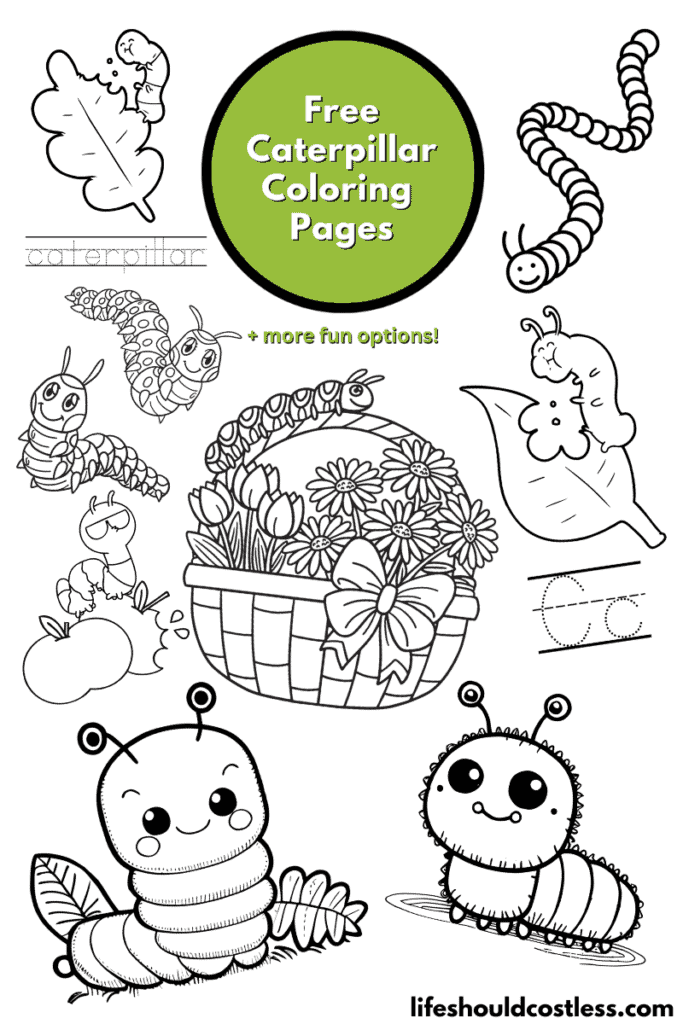
Join us on this artistically educational adventure as we delve into the life of caterpillars and the remarkable insights they can provide.
Simply choose the design that appeals to you, download the free PDF template, print it, and let your creative spirit run free as you color to your heart’s delight.
Alternatively, these templates can also serve as excellent embroidery patterns or sources of inspiration for delicate fine-line tattoos. The possibilities are as limitless as your imagination!
Caterpillar facts
For those who are exploring my coloring pages for the first time, it’s important to note that I enjoy providing you with the choice to delve into the subject matter, allowing you to seamlessly transform the coloring experience into an educational opportunity.
So, without further ado, let’s embark on this enlightening journey!
Caterpillars are fascinating creatures with a wealth of intriguing features and behaviors. Here are numerous fun and interesting facts about caterpillars:
- Diverse Diet: Caterpillars have a diverse range of diets, depending on the species. Some feed on leaves, while others consume flowers, fruits, or even other insects. Their choice of food influences their coloration, camouflage, and defense mechanisms.
- Growth Spurts: Caterpillars are voracious eaters due to their rapid growth rate. Some can increase their body size by several thousand times during their larval stage.
- Molting Process: As caterpillars grow, their rigid exoskeleton becomes too tight. To accommodate their expanding bodies, they undergo a process called molting. They shed their old skin and grow a new, larger one.
- Antennae and Hooks: Caterpillars possess small, often inconspicuous, antennae that help them detect changes in their environment. They also have tiny hooks on their bodies that aid in gripping surfaces and moving around.
- Camouflage Tactics: Many caterpillars have evolved remarkable camouflage techniques to avoid predators. They mimic leaves, twigs, or even bird droppings, effectively blending into their surroundings.
- Warning Colors: Some caterpillars are brightly colored with bold patterns, signaling to predators that they’re toxic or unpalatable. This phenomenon, known as aposematism, warns potential predators to stay away.
- Stinging Hairs: Caterpillars like the Io moth and the saddleback caterpillar possess stinging hairs or spines that can cause skin irritation or allergic reactions in humans who come into contact with them.
- Social Caterpillars: Certain species of caterpillars exhibit social behavior. They live in groups, construct communal nests, and work together to find food and defend against predators.
- Silk Production: Silk-producing caterpillars, like the silkworm, create their cocoons using a fluid protein they excrete. This silk is incredibly strong and has been used for various human purposes for thousands of years.
- Symbiotic Relationships: Some caterpillars have developed mutually beneficial relationships with other organisms. For example, certain ant species protect caterpillars from predators, and in return, they receive honeydew, a sugary secretion from the caterpillars.
- Imitation of Snakes: The caterpillar of the spicebush swallowtail butterfly has eye-like markings on its body that resemble the eyes of a snake. This illusion can deter potential predators from attacking.
- Caterpillar Noises: Some caterpillars are capable of producing sounds as a defense mechanism. They might make clicking or squeaking noises to startle predators or signal danger.
- Variety of Appendages: Caterpillars can have a range of appendages, such as fleshy protuberances, spikes, or filaments, which serve different purposes. Some are used for protection, while others help in locomotion.
- Migration Patterns: Certain species of caterpillars engage in long-distance migrations. The armyworm moth caterpillar, for instance, can form large moving groups that travel together to find new food sources.
- Predator Deception: Some caterpillars mimic parts of their surroundings, like snake heads or bird droppings, to deceive potential predators into thinking they’re something other than a tasty meal.
- Chemical Communication: Caterpillars can communicate through chemical signals called pheromones. These scents can be used to attract mates, repel predators, or signal alarm within their group.
- Cryptic Behavior: Certain caterpillars exhibit cryptic behaviors, such as freezing or dropping from their host plants, to escape predators. This sudden change in behavior can confuse attackers.
- Parasitoid Relationships: Some wasp species lay their eggs on or inside caterpillars. The wasp larvae then consume the caterpillar as they develop, eventually emerging from their host.
- Artificial Colors: In some regions, researchers have used caterpillars to study air pollution. The caterpillars’ changing coloration is affected by pollutants in the environment, acting as an early warning system.
- Life Cycle Transformation: Perhaps the most captivating fact of all is the metamorphosis process that caterpillars undergo. They transform from the larval stage to pupa and finally into a completely different creature – a butterfly or moth, showcasing the marvels of nature’s ingenuity.
Caterpillars’ extraordinary traits and behaviors offer endless opportunities for learning and inspiration, making them a fascinating subject for both coloring pages and educational exploration.
We learned a lot, but there is so much more to know about caterpillars.
If you would like to continue in your quest for caterpillar-filled-knowledge, here are some other reputable resources to learn about them while coloring:
- https://en.wikipedia.org/wiki/Caterpillar
- https://kids.britannica.com/kids/article/caterpillar/352925
- https://museumsvictoria.com.au/learning/little-science/teacher-support-materials/life-cycles/
- https://www.wikihow.com/Identify-a-Caterpillar
- To see all of my free printables, go here.
- If you would like to see my index of free printable coloring pages, go here!
- To see all of my animal coloring pages, go here.
- To see all of my insect-related coloring pages, go here.
Printing instructions
*Keep in mind that while these coloring sheets are free, they are for personal use only. Any additional use will need written permission, from me, obtained via email. Thanks.*

How to get best results with your caterpillar printable
From writing practice worksheets, to various fun designs, we have caterpillar coloring options for everyone.
Materials
- Black Ink/Toner
- Standard 8.5"x11" Printing Paper (or quality cardstock)
Tools
- Computer/ Phone/ Or Tablet To Download To
- Printer
- Colored Pencils
- Eraser (optional)
- Pencil Sharpener
Instructions
-
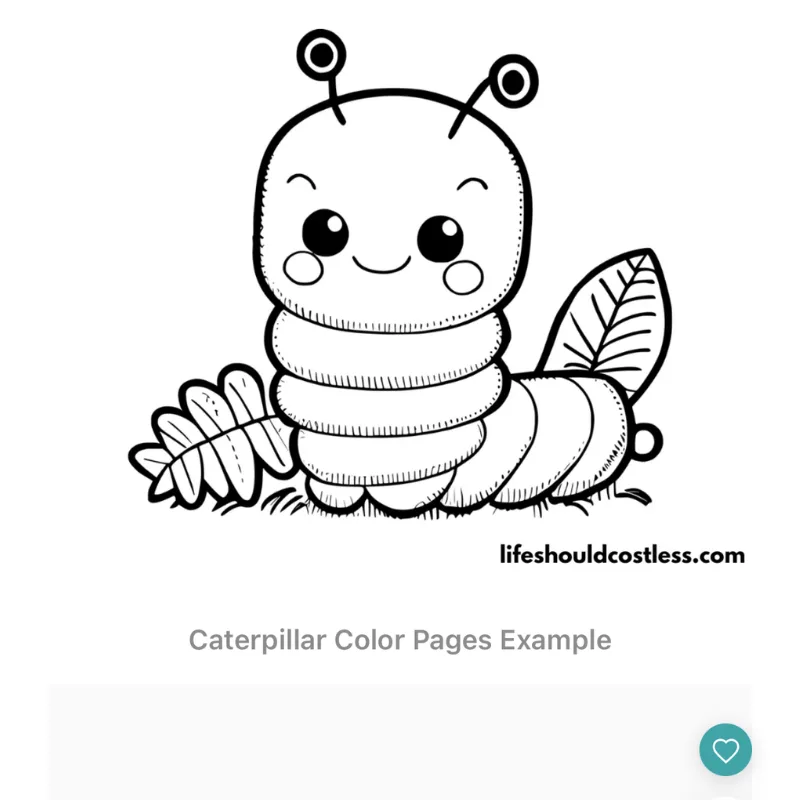 Explore through the options of coloring sheets available and select the image or images you wish to color. The provided sample image, featuring the website's watermark, offers an idea of the complete PDF.
Explore through the options of coloring sheets available and select the image or images you wish to color. The provided sample image, featuring the website's watermark, offers an idea of the complete PDF. 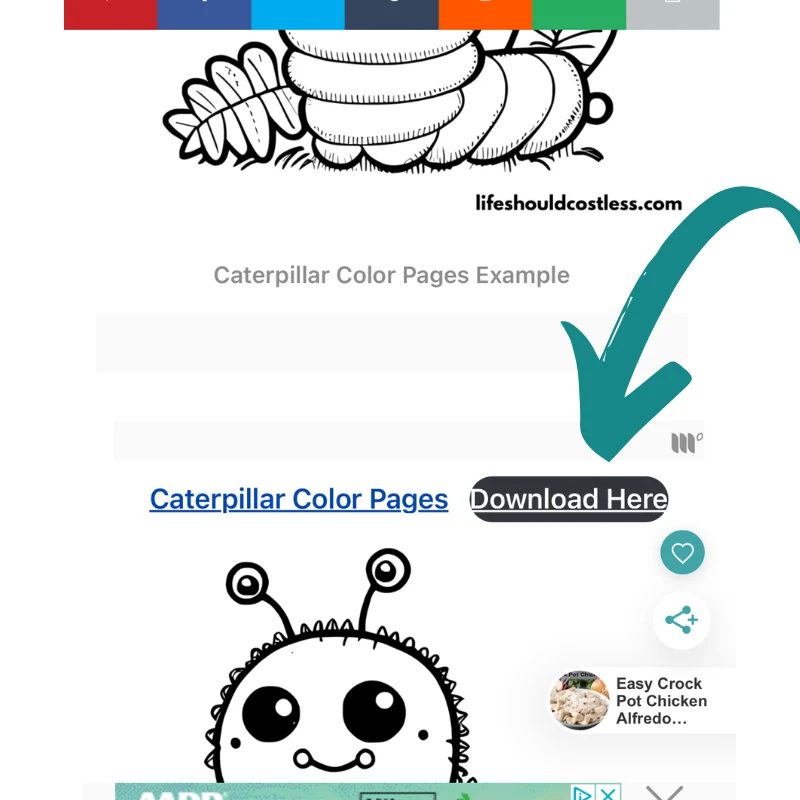 Direct your attention just below your preferred sample image to locate the "download here" button for the PDF.
Direct your attention just below your preferred sample image to locate the "download here" button for the PDF.-

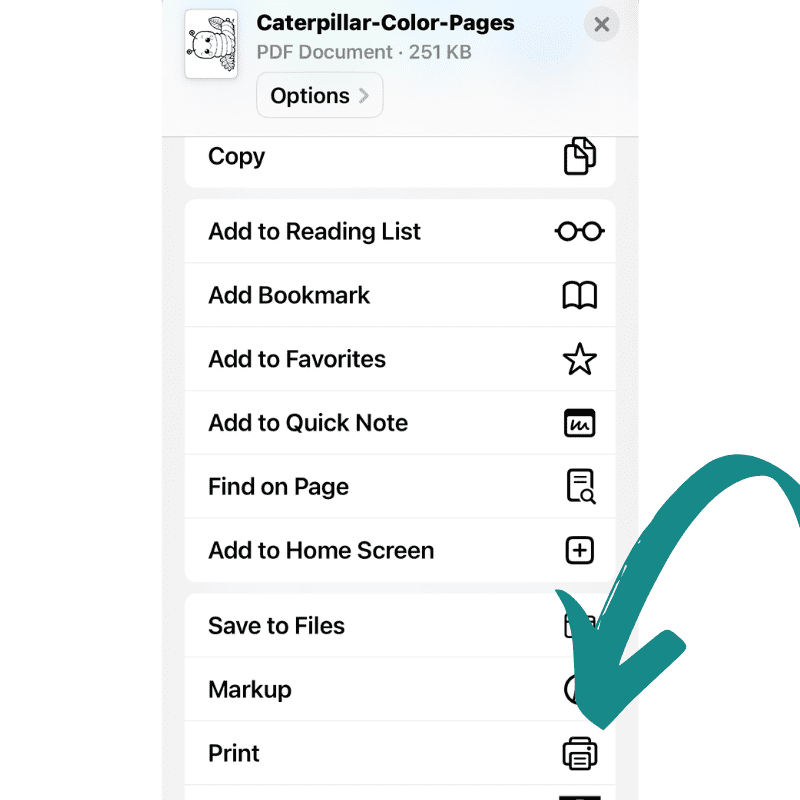 Select the download & print options.
Select the download & print options. -
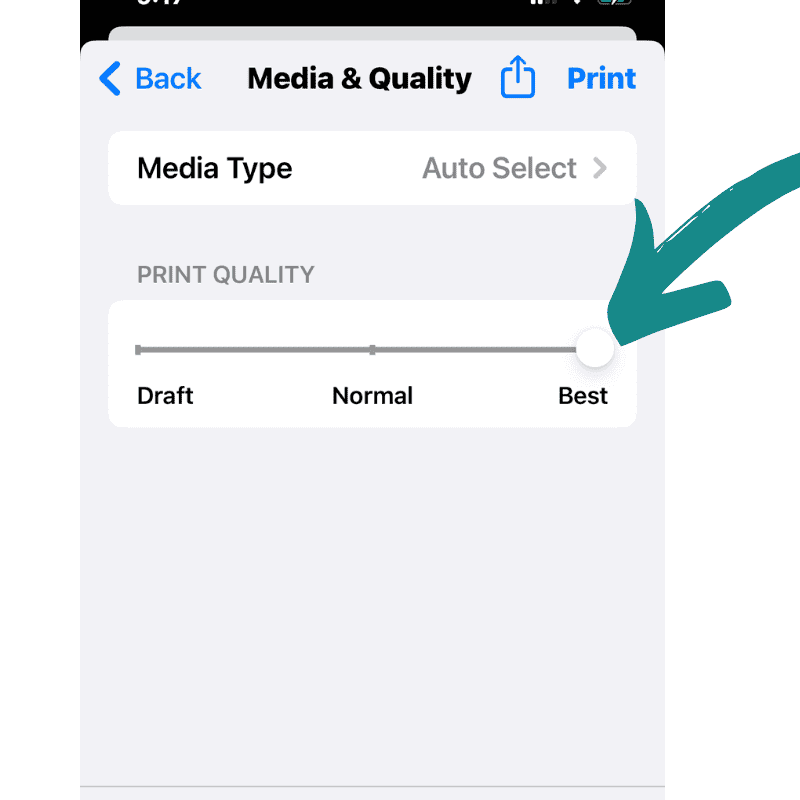 When you're ready to print, choose the maximum-quality setting or the highest DPI (dots per inch) setting accessible. DPI refers to the amount of printed dots within an inch of the printed image, and a greater the number indicates better print quality.
When you're ready to print, choose the maximum-quality setting or the highest DPI (dots per inch) setting accessible. DPI refers to the amount of printed dots within an inch of the printed image, and a greater the number indicates better print quality.  Now select "print" and send it to the desired printer.
Now select "print" and send it to the desired printer.-
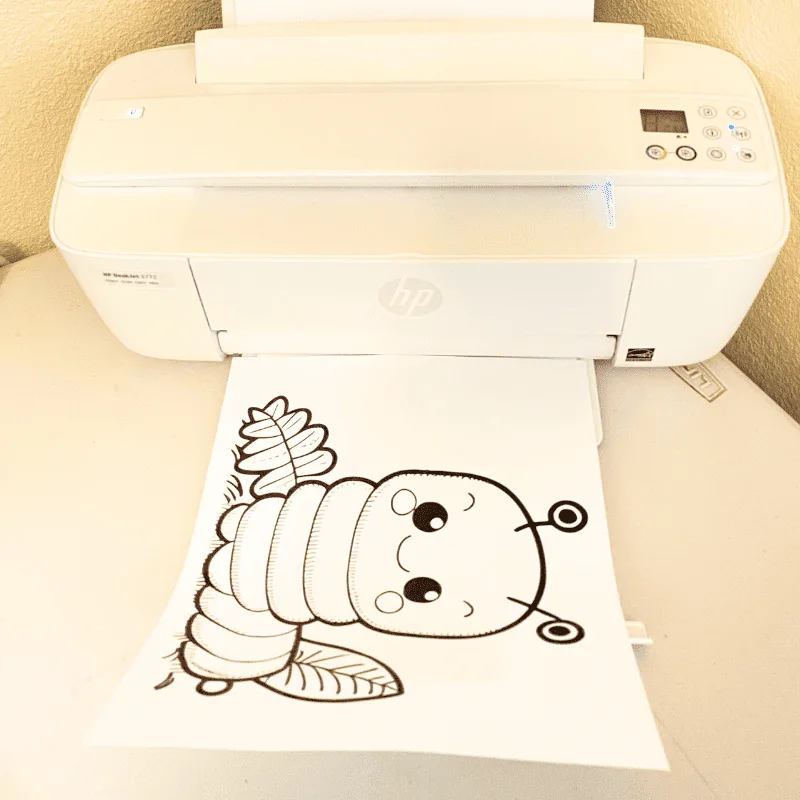 After you've completed printing your color sheet, give the ink a few minutes to set and completely dry out. This extra precaution will help to avoid any smudging, which is particularly helpful if you want to gift your artwork to someone special.
After you've completed printing your color sheet, give the ink a few minutes to set and completely dry out. This extra precaution will help to avoid any smudging, which is particularly helpful if you want to gift your artwork to someone special. -
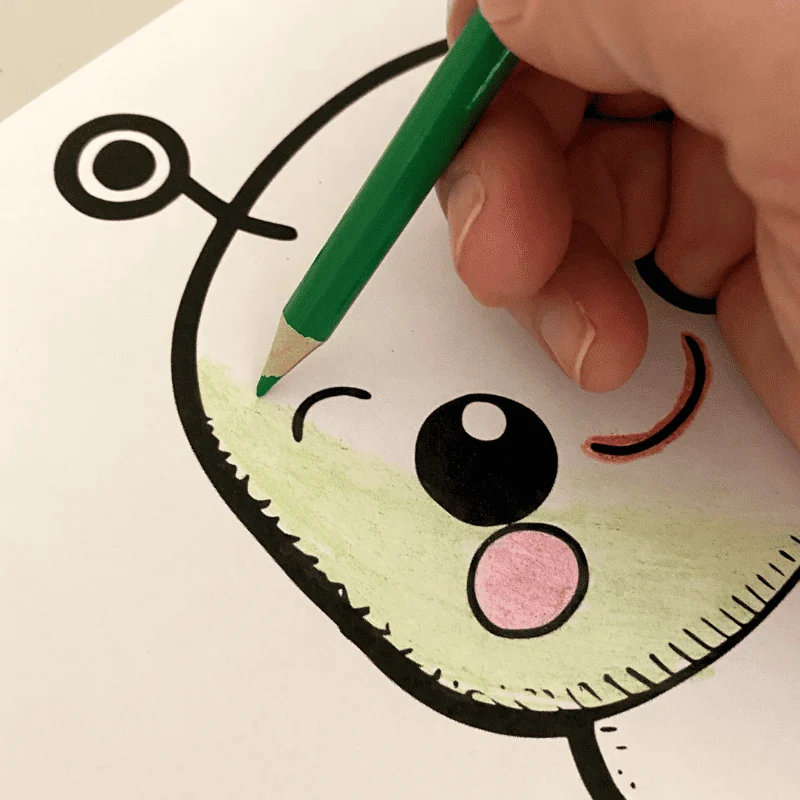 Before you begin coloring, make sure your hands are washed and completely dry. Locate a tidy and even surface to place your paper on, and then let your creativity flow as you color the prints however you desire. Once you're done, enjoy the sense of accomplishment, knowing that these creations can bring delight to you and others for many years to come.
Before you begin coloring, make sure your hands are washed and completely dry. Locate a tidy and even surface to place your paper on, and then let your creativity flow as you color the prints however you desire. Once you're done, enjoy the sense of accomplishment, knowing that these creations can bring delight to you and others for many years to come.
Notes
Ideas on what to do with these caterpillar pictures:
You could print the pages out and bind them, pair them with some nice colored pencils or an art set, and it could be a fun but unique gift for any coloring enthusiast's special day...or any time you wish just to cheer someone up.
You could also buy some simple frames, have them printed onto quality card stock at a local printing company, color them as well as you are able, and they could be added to your homes decor.
These free caterpillar coloring pictures can also be used as embroidery patterns using transfer sheets.
Or they could even be used as inspiration or pattern for those fine-line tattoos.
Of course, you also have the option to just print them out, and color them as many times as you want providing endless fun.
*It's important to note that this website utilizes an image optimizer for the sample pictures, which enhances loading speed while also slightly decreasing quality. For the best outcome, we suggest downloading and directly using the PDF file. The sample image is meant to offer a general visual representation since scrolling through a whole PDF might pose challenges on specific devices, potentially making it hard to view the entire image within a single screenshot.
**Instructions for best print quality are tailored primarily for iPhone users with an HP printer, however they should be reasonably similar for other devices.
***Whenever possible, select the "fit to page" option before printing to ensure the complete image is encompassed within your printed coloring page.
Recommended Products
Please note that I am an affiliate with Amazon.com. When you purchase through my suggested product links, the cost for you is the same but I do receive a small commission for everything in your shopping cart. Thanks so much for the support!
-
 Printworks Vanishing Embroidery Transfers, for White/Light-Colored Fabrics, 12 Sheets, Inkjet, 8.5 x 11 (00524)
Printworks Vanishing Embroidery Transfers, for White/Light-Colored Fabrics, 12 Sheets, Inkjet, 8.5 x 11 (00524) -
 eletecpro 12x16 Picture Frames Set of 5, Display 8x10 or 8.5x11 Photo Frame with Mat or 12x16 without Mat, Wall Gallery Poster Frames, Photo Frames Collage for Wall Display
eletecpro 12x16 Picture Frames Set of 5, Display 8x10 or 8.5x11 Photo Frame with Mat or 12x16 without Mat, Wall Gallery Poster Frames, Photo Frames Collage for Wall Display -
 PRINA Art Supplies 120-Color Colored Pencils Set for Adults Coloring Books with Sketchbook, Professional Vibrant Artists Pencil for Drawing Sketching Blending Shading, Quality Soft Core Oil Based
PRINA Art Supplies 120-Color Colored Pencils Set for Adults Coloring Books with Sketchbook, Professional Vibrant Artists Pencil for Drawing Sketching Blending Shading, Quality Soft Core Oil Based -
 Sacnahe Tattoo Transfer Stencil Machine Copier Printer Thermal Tattoo Kit Copier Printer With 20pcs Free Tattoo Stencil Transfer Paper Black (2023 Update Version)
Sacnahe Tattoo Transfer Stencil Machine Copier Printer Thermal Tattoo Kit Copier Printer With 20pcs Free Tattoo Stencil Transfer Paper Black (2023 Update Version) -
 Looney Zoo Temporary Tattoo Markers for Skin, 10 Body Markers + 20 Large Tattoo Stencils for Kids and Adults, Dual-End Tattoo Pens Make Bold and Fine Lines with Cosmetic-Grade Temporary Tattoo Ink
Looney Zoo Temporary Tattoo Markers for Skin, 10 Body Markers + 20 Large Tattoo Stencils for Kids and Adults, Dual-End Tattoo Pens Make Bold and Fine Lines with Cosmetic-Grade Temporary Tattoo Ink -
 U.S. Art Supply 163-Piece Mega Deluxe Art Painting, Drawing Set in Wood Box, Desk Easel - Artist Painting Pad, 2 Sketch Pads, 24 Watercolor Paint Colors, 24 Oil Pastels, 24 Colored Pencils, 60 Crayons
U.S. Art Supply 163-Piece Mega Deluxe Art Painting, Drawing Set in Wood Box, Desk Easel - Artist Painting Pad, 2 Sketch Pads, 24 Watercolor Paint Colors, 24 Oil Pastels, 24 Colored Pencils, 60 Crayons
Coloring tips
Coloring caterpillars can be a delightful and creative experience. Here are some of my best tips and tricks to enhance your coloring process:
- Research and Observation: Before you start coloring, take a moment to look at real caterpillar images or illustrations. Observe their colors, patterns, and textures to gain inspiration and accuracy for your coloring.
- Color Choice: While you have creative freedom, consider using colors that mimic real caterpillar species. Many caterpillars are green, brown, or even brightly colored, so choose shades that reflect their natural appearances.
- Layering and Blending: Experiment with layering different shades of the same color to add depth and dimension to your caterpillar. Use light pressure initially and gradually build up color layers for smoother blending.
- Texture Imitation: Caterpillars often have unique textures, like bumps, spines, or hairs. To recreate these textures, use techniques such as stippling (dots), cross-hatching (crossed lines), or even adding a bit of texture medium for tactile effect.
- Gradient Effects: Caterpillars can have subtle color gradients along their bodies. Achieve this effect by gradually transitioning between lighter and darker shades of the same color.
- Contrast and Highlighting: Enhance your caterpillar’s appearance by adding highlights on raised areas and shadows in recessed regions. This technique adds depth and realism to your coloring.
- Complementary Colors: Consider using complementary colors for accents or background elements. Complementary colors are opposite each other on the color wheel (e.g., red and green), creating vibrant and visually striking combinations.
- Color Pencils Techniques: Explore various color pencil techniques, like burnishing (applying heavy pressure for a smooth, waxy finish), layering, blending with a colorless blender pencil, or even using a light-colored pencil to blend and soften edges.
- Reference Materials: Have a picture or illustration of a real caterpillar handy for reference. This can help you stay accurate in terms of colors and patterns.
- Experiment with Mediums: Don’t limit yourself to just colored pencils. Try using watercolors, markers, or even digital tools if you’re working digitally. Each medium offers unique effects and possibilities.
- Background Enhancement: Consider adding a simple background to complement your caterpillar. It could be a plant, leaves, or a natural habitat that adds context to your artwork.
- Patience and Practice: Coloring takes time and practice. Don’t rush the process. Take your time to achieve the desired results, and with practice, your coloring skills will improve.
- Protective Sheets: If you’re concerned about smudging your work, use a scrap piece of paper as a protective sheet under your hand as you color.
- Try Different Papers: Different paper types can affect how your colors appear and blend. Experiment with different textures and weights to find what suits your coloring style best.
- Personalization: While realism is a great approach, don’t be afraid to inject a touch of your personal style. You can experiment with imaginative colors or even create a fantastical caterpillar species of your own.
- Focus on Details: Pay attention to the small details like eyes, facial features, and unique patterns. These details can make your caterpillar come to life.
- Online Tutorials: If you’re looking to learn new techniques, there are plenty of online tutorials and videos dedicated to coloring and shading caterpillars. YouTube is a great reference for this.
Remember, coloring is a creative endeavor, and there are no strict rules.
The key is to enjoy the process, experiment with different techniques, and create a caterpillar artwork that brings you joy and satisfaction.
Options For Printing:
Letter C is for caterpillar writing practice worksheets
*The provided letter C is for caterpillar coloring sheet printables are exclusively tailored for classroom use.
Unlike other printable alternatives on this page, these do not require written authorization for public use.
If asked about their source, please share the link to this post. Your support and cooperation is greatly appreciated.
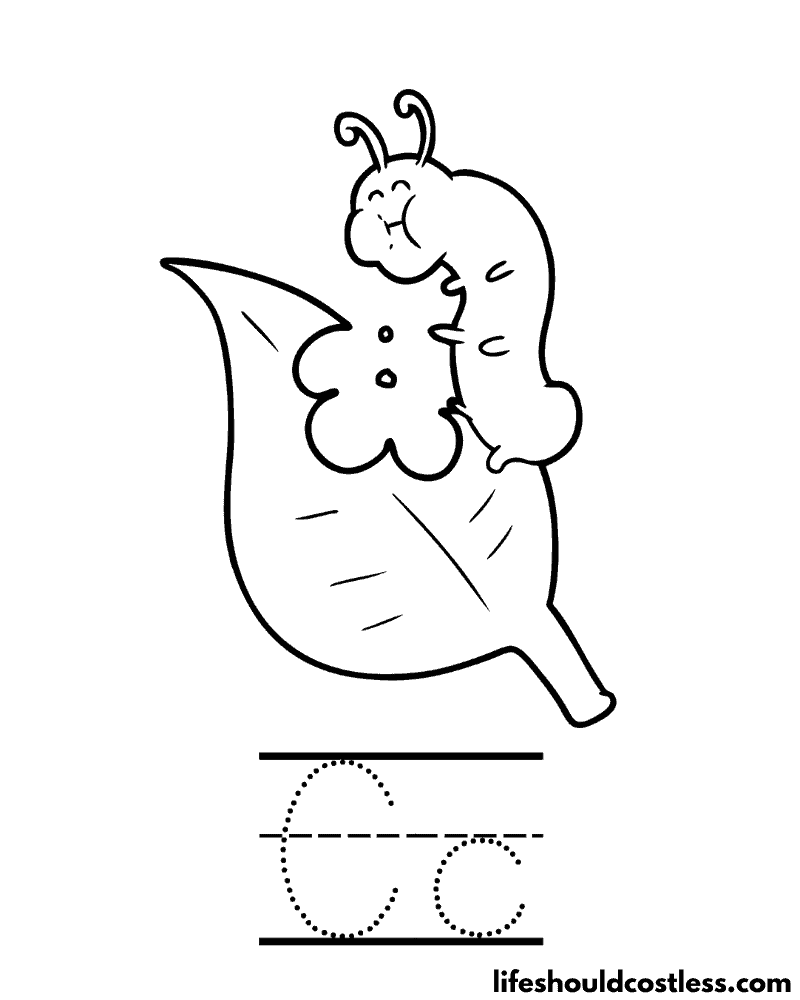

Various Caterpillar Designs
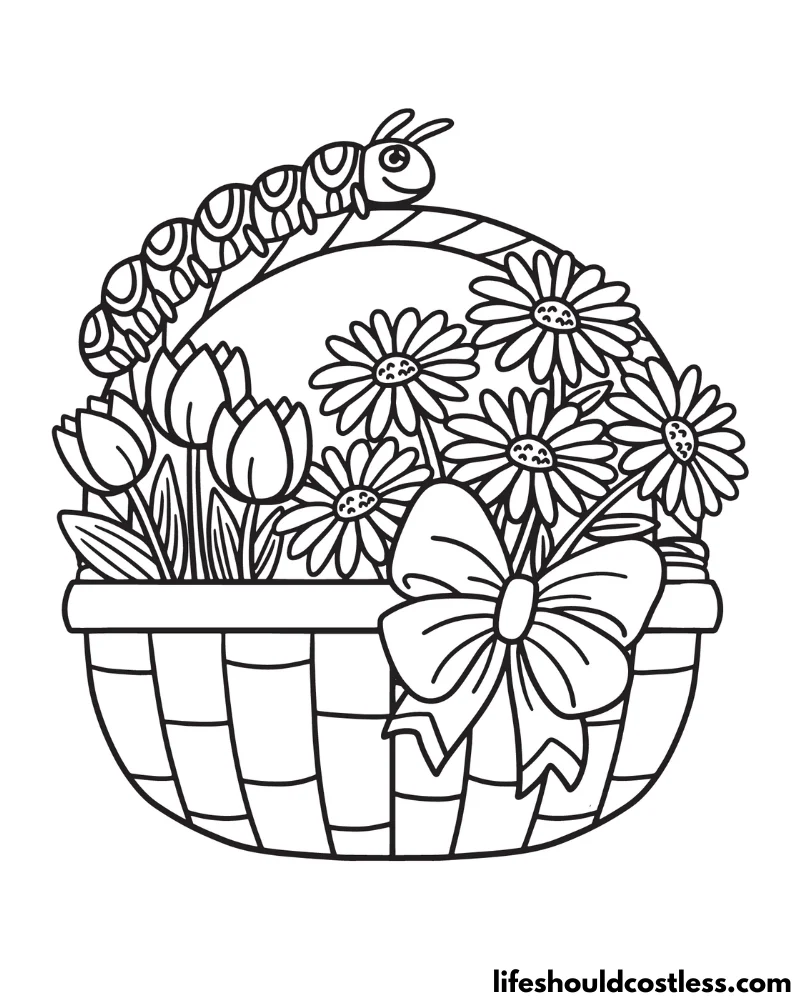
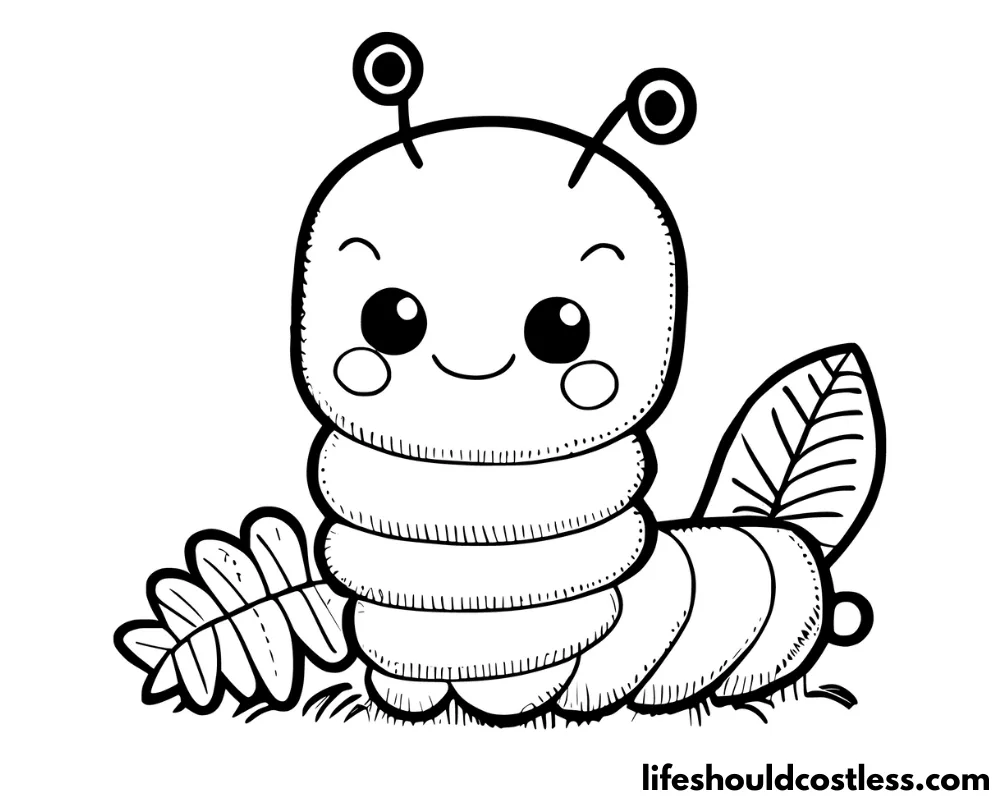
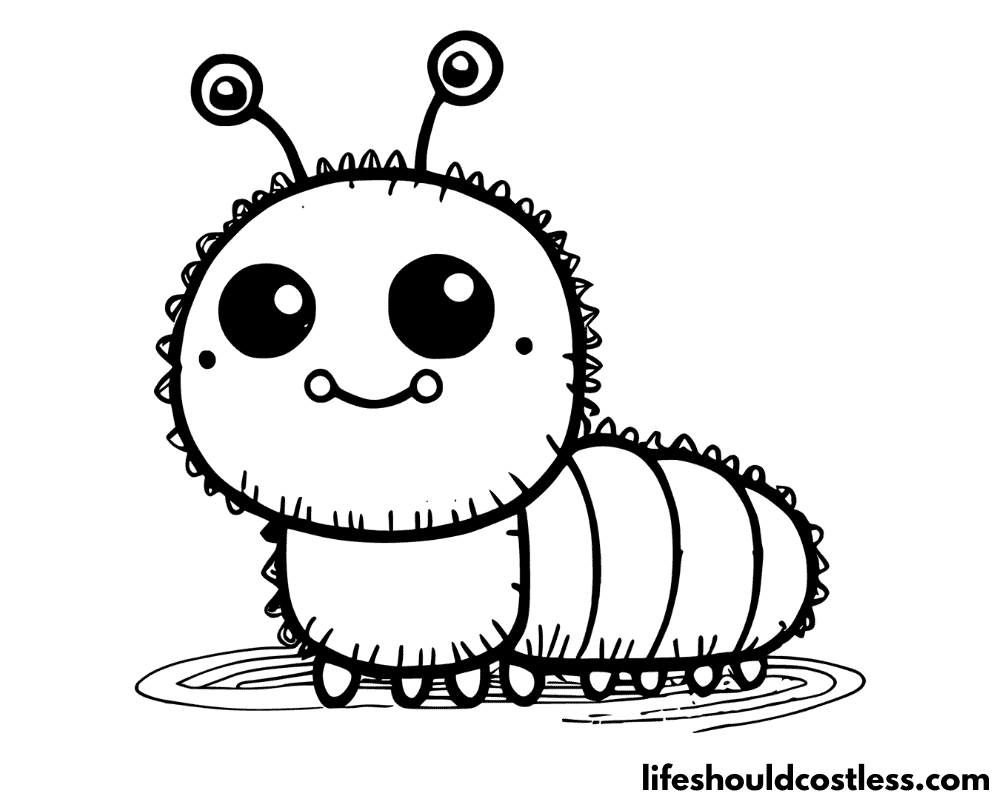
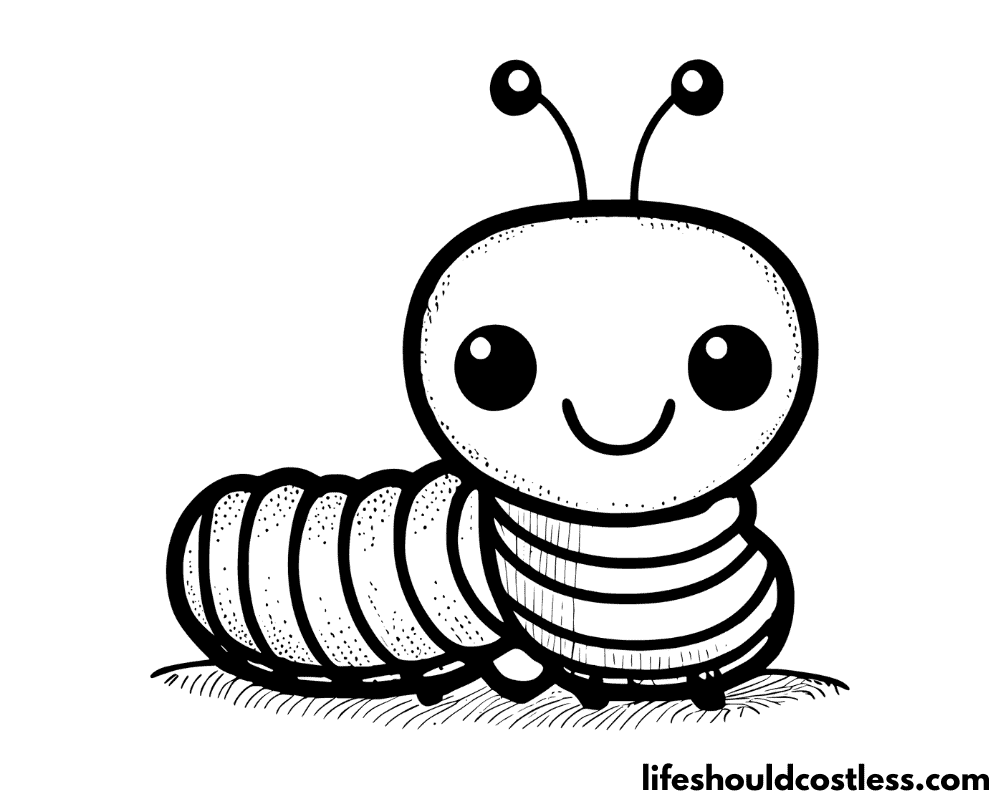
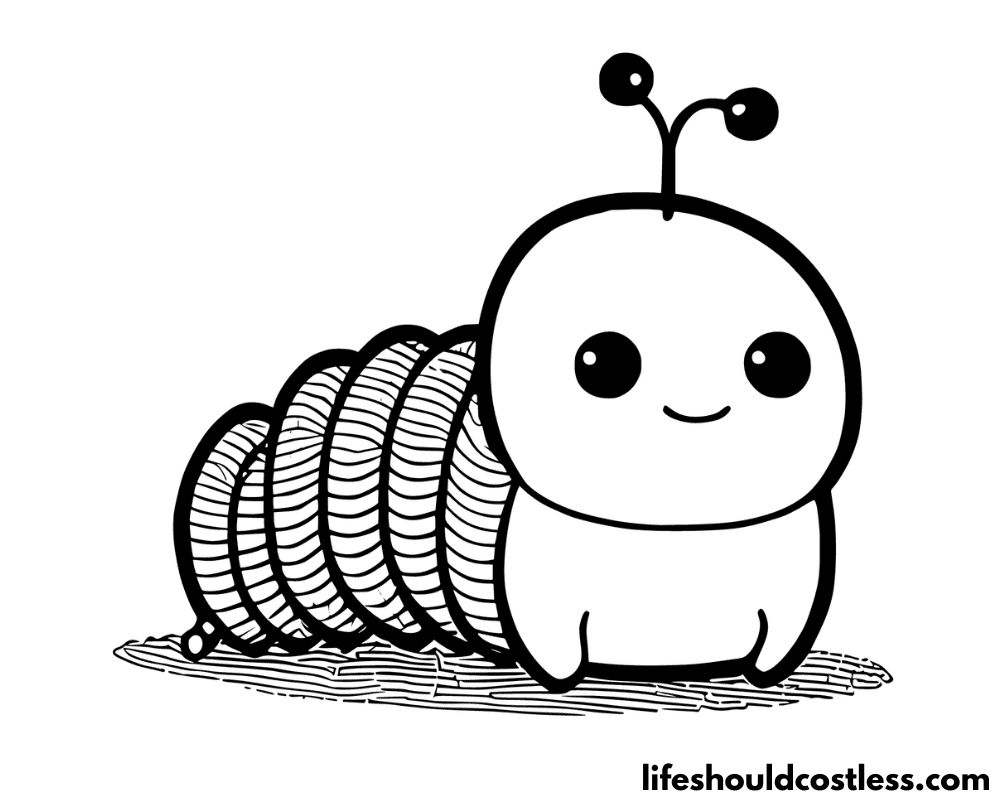

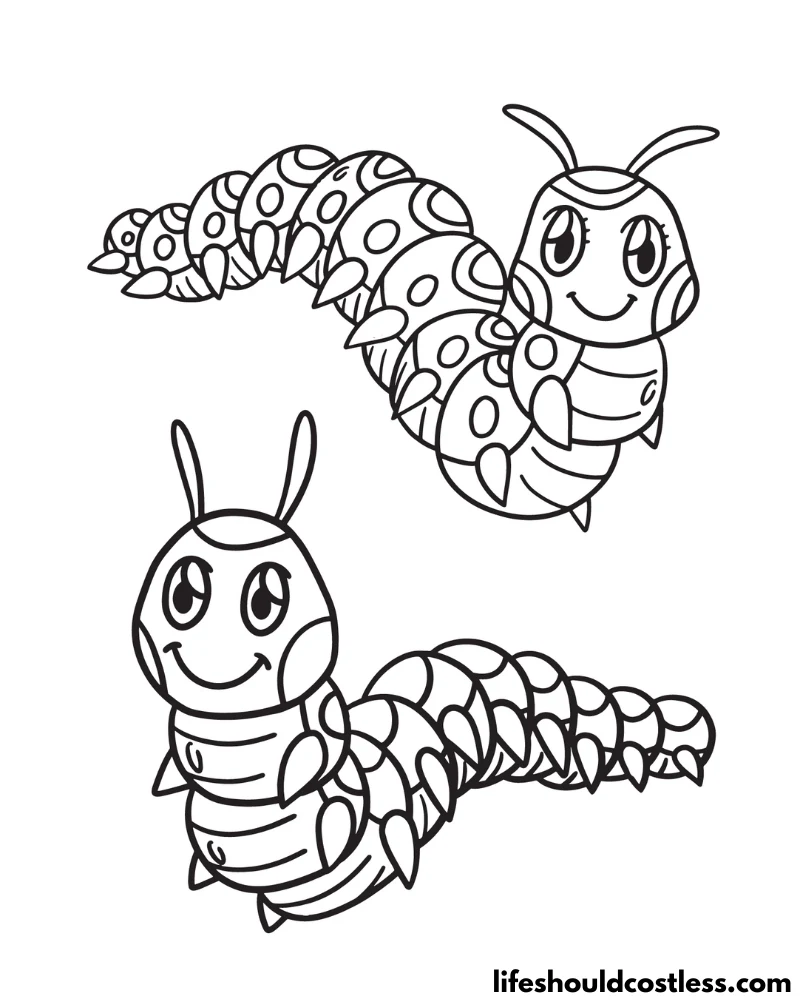

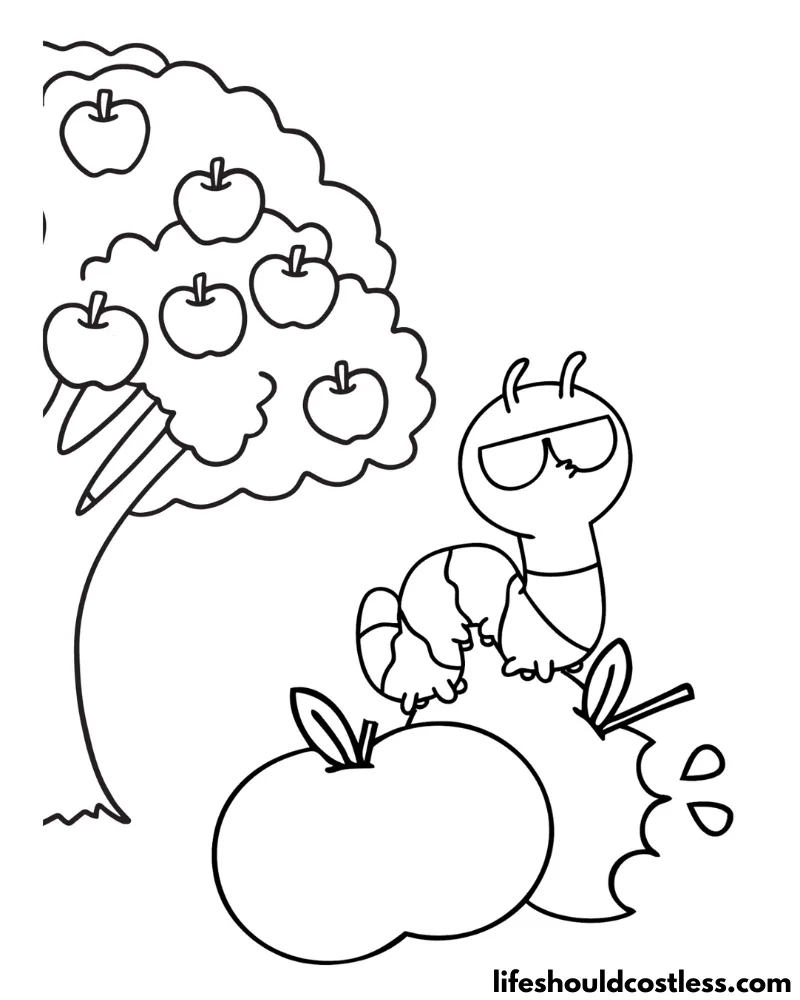
FAQ’s
The most common color of caterpillar is typically green. This coloration serves as a form of camouflage, helping caterpillars blend into their natural surroundings, such as leaves and vegetation.
However, it’s important to note that caterpillars come in a wide variety of colors, including brown, yellow, and even brightly colored, depending on their species, habitat, and evolutionary adaptations.
*I will add more caterpillar colour / color questions and answers as the questions get sent to me.
Conclusion
In conclusion, as we close the chapter on this exploration of caterpillar coloring pages, we’ve embarked on a journey that bridges art and education, imagination and nature.
These pages have not only offered a canvas for creativity but have also unveiled the remarkable world of caterpillars, those seemingly humble creatures that transform into awe-inspiring butterflies and moths.
Through the act of coloring, we’ve had the opportunity to celebrate the diversity of caterpillar species, experiment with colors and techniques, and perhaps even gain a newfound appreciation for the intricacies of their life cycles and behaviors.
Whether you’re a young learner or a seasoned artist, the lessons learned from these coloring sheets extend beyond the page, reminding us of the marvels hidden within our natural world and the power of curiosity and creativity to inspire learning.
So, let your colored caterpillars take flight in your imagination, as they remind us of the beauty that lies in every stage of life’s journey.
Thanks so much for stopping by my blog and supporting my endeavors to make people’s lives a little easier/better/more affordable.
If you liked this post, or found it helpful in any way, please make sure to share it with your family, friends, and co-workers via social media…
Or you could even send them the direct link via email. Whichever way you choose to spread the love, I super appreciate it! ~Sarah

Follow Me
How To Follow & Support This Site
- If you would like to subscribe to my email list, go here.
- Make sure to follow along via social media, by going here.
- If you would like to learn how to really show your support to this site (at no cost to you), go here.
- If you would like to make a direct donation to the site, go here.
Check out my other free printables
- To see all of my free printables, go here.
- If you would like to see my index of free printable coloring pages, go here!
- To see all of my animal coloring pages, go here.
- To see all of my insect-related coloring pages, go here.
Otherwise, here are direct links to several of my other related posts that you’re also going to love:
Animals / Insects
Animals / Birds
Animals / Mammals
Other good resources for a printable caterpillar
- https://www.kidzone.ws/animals/color-caterpillar.htm
- https://www.homemadegiftguru.com/caterpillar-coloring-page.html
- https://www.kidzone.ws/animals/color-caterpillar.htm
*This post was originally shared to this blog on 08/23/2023, and has since been updated to improve user experience, add video instruction, as well as to make it as shareable as possible across the social medias.
**Please note that I do try my hardest to provide factual, but easy to understand, information about each topic. If you notice a discrepancy in my coloring pages, facts, or see something that you deem “misinformation/incorrect” please make sure to notify me about it. I would prefer that you send me an email with a link to a more reputable resource on that subject, so that I can correct it as soon as possible. Thanks so much for helping this site become the best that it can be!
***Resources from djinkers were used in the production of this article.
